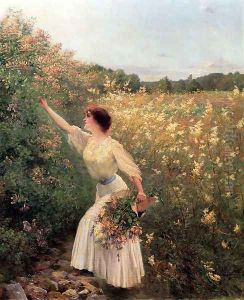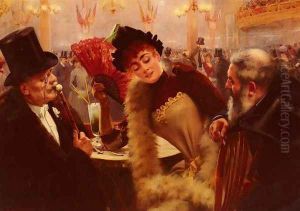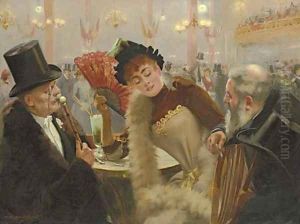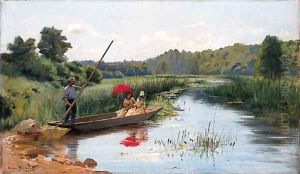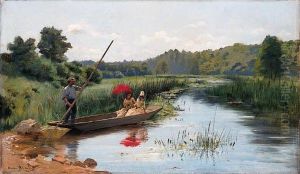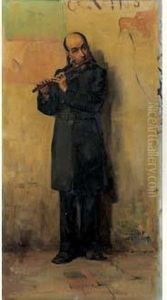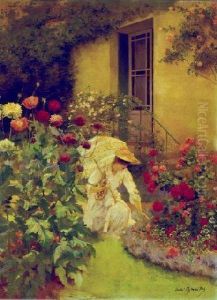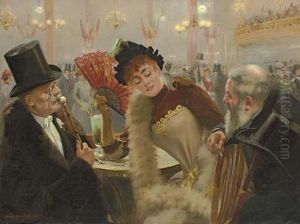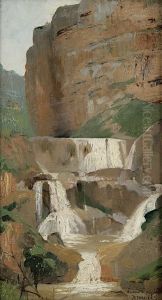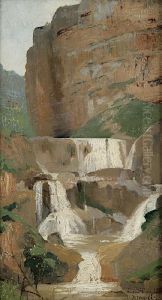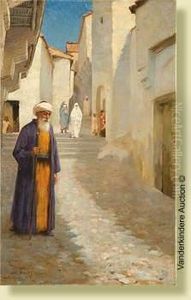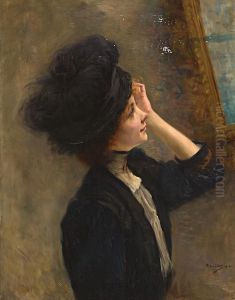Pierre Andre Brouillet Paintings
Pierre André Brouillet was a French painter known for his contributions to the academic and genre painting traditions of the 19th century. Born in Charroux, Vienne, France, in 1857, Brouillet pursued an artistic career that reflected the academic standards of his time, emphasizing classical themes, meticulous technique, and a dedication to realism and detail.
Brouillet's education in art began at the École des Beaux-Arts in Paris, where he studied under influential teachers such as Alexandre Cabanel, a key figure in French academic painting. This training grounded him in the principles of academic art, which valued historical, mythological, and classical subjects painted with precision and a polished finish.
Throughout his career, Brouillet exhibited his works at the prestigious Paris Salon, the annual art exhibition in France that was the foremost venue for artists to gain recognition. His paintings often depicted scenes from everyday life, historical events, and literary references, showcasing his ability to weave narrative and emotion into his works. One of his most famous works is 'A Clinical Lesson at the Salpêtrière', painted in 1887, which depicts a lecture by Dr. Jean-Martin Charcot, a leading neurologist of the time, demonstrating a case of hysteria in a female patient at the Salpêtrière Hospital in Paris. This painting is notable for its detailed portrayal of the characters and the setting, capturing a significant moment in the history of medicine and psychology.
Brouillet's style, while rooted in the academic tradition, also showed an openness to the influences of Impressionism and Post-Impressionism, reflecting the evolving artistic landscape of late 19th-century France. His use of color and light, though more restrained than that of the Impressionists, contributed to the mood and atmosphere of his scenes.
Pierre André Brouillet's contributions to French art were recognized in his lifetime, and his works continue to be appreciated for their historical value and technical excellence. He passed away in 1914, leaving behind a legacy that provides insight into the academic art practices and cultural context of his era.
